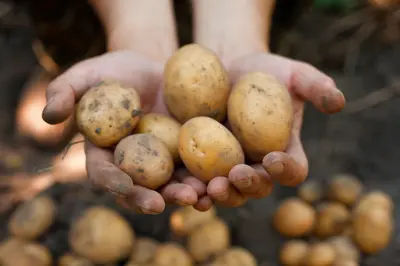
Dog Food Q&A
With so many different foods on the market at different price points, how do you choose a food that’s right for your pet?
The most important consideration in selecting the right food for your dog is to feed a high-quality pet food. High-quality means no by-products, chemical preservatives or dyes, using human grade or high-quality meats, and health promoting ingredients such as chelated minerals, probiotics, antioxidants, and omega fatty acids.
Knowledgeable, fully trained staff at Buckerfield’s can answer your questions and help you decide which diet is best for your pet. Look to us for sound advice when it comes to making healthy pet food choices. After all we are Buckerfield’s pet specialists!
Before recommending a dog food, our pet specialists will ask:
- What breed of dog do you have?
- Is it male or female?
- If female is she pregnant or nursing?
- How old is your dog? A new puppy or a senior dog?
- Describe your pet’s activity level: very active or a couch potato?
- Any health issues? Have you checked with your vet?
- Does your dog have food allergies? Sensitive stomach?
- Any hip or joint problems?
- How is your dog’s skin and coat?
- Why are you switching from your dog’s current food?
These are some of the questions we will need to know before we can recommend a premium dog food. Let’s start!
So, what is the best dog food?
- It is impossible to pin down the answer to just one winner. The variety of dog food companies offering top quality food is outstanding.
- At Buckerfield’s, we offer many types of premium pet foods that are guaranteed to get the results you are looking for: proper nutrition, healthy skin and coat and fewer stools.
- Some of the premium pet food we carry include: Nutro, Petcurean, First Mate, Orijen, Acana, Blue Buffalo, Bold by Nature, Instinct, Natural Balance, Canadian Naturals, Zignature, and Royal Canine, just to name a few.
What is the best food for my breed of dog?
Life stage, lifestyle and overall condition are factors to take into account when deciding which food is right for your pet. Whether your pet is a puppy, kitten, adult or senior, how active or inactive your pet is, and their overall health and body weight.
Major pet food manufacturers now acknowledge that dogs should be fed differently depending on whether they are puppies, full-grown or senior and on whether their size is small, medium, large or giant!
Daily food requirements for your pet should contain nutrients adapted to its size, age and activity level.
When looking for a healthy food, reviewing the list of ingredients found on the back of the bag is a good place to start. By law, pet food labels must list their ingredients by weight.
- Puppies: Puppy foods have nutrient levels that are optimized for growth and development. This includes higher levels of protein and fat than adult foods, more restricted levels of calcium and phosphorus and higher levels of fatty acids that are essential during growth. It is important to feed a puppy food within the recommended feeding guidelines until a puppy has finished growing and developing to ensure optimal growth.
- Adults: Make sure the first ingredient in your food choice is a source of high-quality animal protein. Proteins are essential nutrients used by the body to promote muscle development, aid in tissue repair, provide energy, and support a healthy immune system. Dogs are omnivores-they will eat things like berries and grass but prefer meat. Feeding recommendations for adult dogs can vary, depending upon the breed, activity, and their metabolism. Dogs should be fed at consistent times: once or twice a day and fresh drinking water should always be made available.
- Senior dogs: Senior dogs have different nutritional requirements and may require more protein and vitamins but fewer calories. They have a slower metabolism and may need more joint support. Make sure the food is designed for senior dogs and contain glucosamine and chondroitin for their joints.
- Large breed dogs: Feeding diets formulated for the correct life stage, puppy, adult, and senior is recommended for optimal health.
- Small breed dogs: Feeding diets formulated for the correct life stage, puppy, adult, and senior is recommended for optimal health.
- Overweight dogs: Weight loss foods are formulated to be lower in calories and fat to help less active and older dogs maintain ideal body weight.
How much should I feed my dog?
- The easiest way to find out is check the feeding guidelines on the package. They are based on the daily calorie intake your pet needs to maintain ideal body weight.
- Start feeding this amount and adjust according to your pet’s needs. Feed correct amounts by measuring the recommended daily amount and divide the portion accordingly if you feed more than once a day.
- The amount you feed depends on your pet’s size and energy output. Activity levels vary between breeds and will play an important role in calorie intake.
Does my dog need a grain-free diet?
- Grain-free diets are designed to provide balanced nutrition to dogs with food sensitivities by excluding grain from the diet.
- Grain-free formulas offer limited ingredients and a single source of animal protein to help reduce the likelihood of food sensitivities.
Which foods are dogs more sensitive to?
Foods that contain animal-based proteins like beef, dairy, egg and chicken and grain proteins called gluten found in wheat, barley and rye products are most commonly associated with food sensitivities in dogs.
Does my dog have an allergy to food?
Warning signs of food sensitivity might include dry itchy skin, excessive scratching, and licking of the feet, chronic ear inflammation, and high frequency of hot spots, diarrhea, and vomiting.
How can a grain-free diet help?
A grain-free diet can help by eliminating the most common ingredients that cause allergic reactions and provide a food with a limited-ingredient diet and balanced nutrition.
What benefits does fibre add to my dog food?
- Fibre is considered the non-digestible portion of any food and is responsible for firm stool formation, as well as digestive motility.
- Natural sources of dietary fibre that come from plants and whole grains are commonly used in pet foods.
- Reputable dog food manufactures formulate diets to provide balanced nutrition with the proper levels of fibre in the diet.
Where does protein come from?
Pet foods with higher protein levels are often viewed as being closer in nutrition to the natural diet of dogs and cats and therefore assumed to be healthier.
- Fresh meat is highly palatable but has a low protein density due to its high water content.
- Meat meal is a highly concentrated protein source that results from cooking away the water from fresh meat.
- Meat-by-product meal is similar to meat meal however may contain other animal tissue.
- Dairy proteins are highly digestible.
- Egg protein is considered the most ideal protein due to its amino acid profile and digestibility.
- Plant protein sources result from removing the starch components of grains and vegetables.
How long does dry food stay fresh?
With proper storage, dry foods can be safely used until it reaches its “Best Before” date. That date can be found printed on the package and is commonly about one year from the date of manufacture.
What is better… dry or canned food?
- The best advice is to choose both: feed a quality kibble and canned pet food.
- If you’ve found a quality dry food and but want to provide a little more variety of nutrition in your pet’s diet, offering a canned food could be the answer.
- A canned pet food will stay fresh covered in the fridge for 2-3 days. Allow to warm to room temperature before feeding as cold food does not digest as well.
My dog is fussy! What should I feed?
- Try feeding a different kind of food, such as canned food if you normally feed dry food.
- Dogs and cats are creatures of habit and are usually happy with just one food.
What is the best way to store a dry pet food?
- Be sure to store all kibble in a cool, dry location. Squeeze out any excess air as you seal the open bag, and store in an airtight container.
- Air and moisture are the enemies of opened bags of dry food.
Is it okay to feed my dog table food?
- It’s tempting to give our dogs the things we enjoy, but it’s important you don’t.
- Human food can cause diarrhea, vomiting, allergic reactions or excessive weight gain, not to mention bad habits like begging and jumping up.
Should I supplement my pet’s diet?
- When a 100% complete and balanced food is fed to a normal, healthy pet, supplements are not needed, as they are getting all the nutrients they need from their food.
- Adding ingredients can actually be harmful.
How about feeding treats?
- While your dog needs a healthy meal everyday, they also need a treat now and then. As part of a successful training program, treats can be used as a positive reinforcement and help maintain good dental health. Reward them for a job well done!
- We love to give our dog treats, whether for reward training, general good behaviour or for no reason at all. Choosing the appropriate treat can help keep our dogs healthy and happy.
- Treats can enhance a healthy diet but should never be made up of more than 10% of a dog’s daily food intake.
- The size of the treat should be appropriate for the size of your dog. Choose a brand that meets the same standards as high-quality dog foods.
What is the best way to introduce a new diet to my pet?
- It is important to when changing a pet’s diet to slowly introduce new food. Mix both new and old foods together over a period of 10 days, gradually increasing the ratio of the new food to the old.
- This blending period allows your pet’s digestive system to adjust and will lessen the chance of any upsets that can sometimes accompany diet changes.
- Once you have made your decision and your dog or cat are exclusively eating the new diet, it may be 3-4 weeks before you see changes in your animal’s overall appearance.
- Many pet food companies offer samples or money back guarantees, so let your dog or cat try the food before you finalize your decision. Bring home a few varieties to see which is the most palatable.
- You may have to change the diet again if it does not agree with your pet in some way.
At what age is a dog a senior?
- As a rule, small to medium breeds are considered senior at about seven years of age. Larger breeds reach senior status as early as five years.
- How old does your dog actually look and feel? Many dogs appear young and youthful and are highly active well into their senior years.
- As your pet ages, their digestive system changes and they may require more protein and vitamins but fewer calories. Choose a senior formula that is formulated for your aging dog.
When does a puppy become an adult dog?
Dogs are typically considered puppies until one year of age. However, small breeds may be considered an adult earlier (9 months), whereas large (18 months) and giant (24 months) breeds take longer to finish developing into adults.
How to have less clean-up?
By feeding a premium dog food formulated for their needs you’ll have less stool to pick up in the yard.
Is it ok to let my dog and cat eat each other’s food?
- Cats and dogs have unique nutritional requirements and should be fed a product designed specifically for their needs.
- Health problems can occur from not feeding a 100% complete and balanced product. An occasional venture into each other’s bowls will not be harmful but is not recommended or a regular basis.
- Cats are strictly carnivores, so they need more protein and specific b-complex vitamins and amino acids that aren’t found in dog food.
- Cat foods are high in calories, so a dog that eats cat food could become obese.
Have more questions? Visit your local Buckerfield's and we'll be happy to help!



